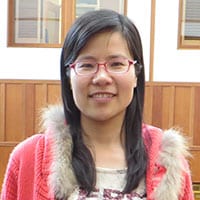Research Summary
During my graduate training, my research focused on gene duplication, functional divergence, and adaptive evolution, which are well acknowledged to be sources for evolutionary innovations. I sought to explore the underlying mechanism of functional divergence after gene duplication based on transcriptional regulation systems, mainly including three types of regulatory elements, cis-motif (TATA box), tran-acting factors and epigenetic regulation. Later, I completed many studies on comparative genomic/transcriptomic/epigenomic evolution, especially on heart chamber evolution across different species, from sea squirt species with only one-tube hearts to human or bird species with four-chamber hearts.
In the words of the great evolutionary biologist Theodosius Dobzhansky, “Nothing in biology makes sense except in the light of evolution.” In this spirit, I am particularly interested in Darwinian medicine, also known as evolutionary application in medicine. I try to understand human diseases or phenotypes by synthesizing the knowledge of evolutionary biology (macroevolution) and population genetics (microevolution) or epidemiology, for example by predicting the impact of variants (both germ-line or somatic) on human phenotypes from an evolutionary view. As a member of Steven Brenner’s UC Berkeley lab, I focus on personal genomics using Next-Generation Sequencing (NGS) technology (mainly whole exome sequencing methods), attempting to find candidate variants for newborn screening of metabolic disorders or primary immunodeficiencies.
Impact in China
Darwinian medicine is a very new field in China. Many scientists have begun to use natural selection related theories to study cancer and other diseases. As a Tang Scholar in the Brenner lab, I will acquire theoretical and experimental training in the field of personalized medicine, especially newborn screening approaches, which I will combine with my evolutionary background. With this experience, I hope to contribute to the relatively new field of evolutionary medicine and make advances in birth defect screening with personal genomic methods in China.
Publications
Liu G.#, Zou Y.#, Cheng Q., Zeng Y., Gu X. and Su Z. 2014. Age distribution patterns of human gene families: divergent for Gene Ontology categories and concordant between different subcellular localizations. Mol Genet Genomics 289 (2): 137-147. (#equal contribution)
Gu X., Zou Y., Huang W., Shen L., Arendsee Z. and Su Z. 2013. Phylogenomic distance method for analyzing transcriptome evolution based on RNA-seq data. Genome Biol Evol 5 (9): 1746-1753.
Gu X., Zou Y., Su Z., Huang W., Zhou Z., Arendsee Z. and Zeng Y. 2013. An update of DIVERGE software for functional divergence analysis of protein family. Mol Biol Evol.30 (7): 1713-1719.
Gu X., Zou Y. and Su Z. 2012. Gene duplication and functional consequences.Applied Computational Genomics (Translational Bioinformatics) (Shugart Y., eds, Springer), 9th Chapter.
Zou Y., Su Z., Huang W. and Gu X. 2012.Histone modification pattern evolution afteryeast gene duplication. BMC Evol Biol12: 111.
Zou Y., Huang W., Gu Z. and Gu X. 2011. Predominant gain of promoter TATA box after gene duplication associated with stress responses. Mol Biol Evol 28(10): 2893-2904.
Zou Y., Su Z., Yang J., Zeng Y. and Gu X. 2009. Uncovering Genetic Regulatory Network Divergence between Duplicate Genes Using Yeast eQTL Landscape. J Exp Zool B Mol Dev Evol 312(7): 722-733.
Yang J., Zou Y. and Zhu J. 2009. Identifying differentially expressed genes in human acute leukemia and mouse brain microarray datasets utilizing QTModel. Funct Integr Genomics 9 (1): 59-66.
Zou Y., Yang J. and Zhu J. 2006. A robust statistical procedure to discover expression biomarkers using microarray genomic expression data.J Zhejiang Univ Sci B 7(8): 603-607.
